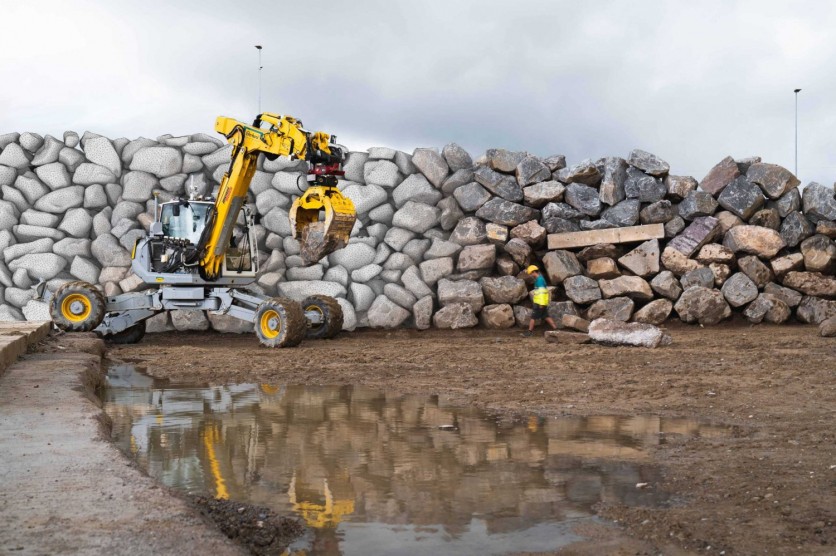Researchers from ETH Zurich have taught a robotic excavator called HEAP to construct a dry stone wall that reaches six meters in height and 65 meters in length on its own.
HEAP: The Robotic Excavator
Traditional dry stone wall construction typically involves extensive manual labor, but this innovative approach leverages the capabilities of the autonomous excavator named HEAP.
The research team, comprising experts from Gramazio Kohler Research, the Robotics Systems Lab, Vision for Robotics Lab, and the Chair of Landscape Architecture, developed this groundbreaking application as part of the National Centre of Competence in Research for Digital Fabrication (NCCR dfab).

The autonomous excavator, HEAP, is equipped with sensors that enable it to create a 3D map of the construction site, identifying existing building blocks and stones for the wall's construction.
Specially crafted tools and machine vision techniques empower HEAP to survey and lift sizable stones within its immediate surroundings, determining their estimated weight and center of gravity.
Subsequently, an algorithm instructs the excavator on the optimal placement of each stone, and it autonomously executes the task of positioning them in their designated spots. Notably, this self-sufficient machine adeptly manages 20 to 30 stones in a single load, a capacity comparable to that of a traditional delivery.
The research, conducted under the National Centre of Competence in Research for Digital Fabrication, revolves around advancing automated construction processes that amplify efficiency and make use of local resources. This approach presents a more sustainable and environmentally friendly alternative to traditional building methods.
Read Also : Robotics Meets Paleontology: How a 450-Million-Year-Old Organism Is Being Modernized for Softbotics
AI-Powered Construction
The robotic construction pipeline presented in the research involves planning and building freeform stone walls and landscapes from locally sourced materials, showcasing the potential for adaptively using irregular, abundant, and sustainable materials with minimal transportation and preprocessing.
The innovative process is not limited to constructing stone walls. It extends to shaping autonomous terrains on a single construction site.
The researchers demonstrate the capabilities of their approach through the construction of a freestanding stone wall (10 meters by 1.7 meters by 4 meters) and a permanent retaining wall (65.5 meters by 1.8 meters by 6 meters) integrated with robotically contoured terraces covering an area of 665 square meters.
That may signify a significant advancement in construction technology, showcasing the potential of autonomous heavy construction vehicles to efficiently and adaptively build with irregular, sustainable materials.
The research not only transforms traditional construction practices but also highlights the possibilities of using AI-driven machinery to shape the future of construction, particularly in remote locations where efficiency and resource utilization are paramount.
"The work illustrates the potential of autonomous heavy construction vehicles to build adaptively with highly irregular, abundant, and sustainable materials that require little to no transportation and preprocessing," the study's abstract reads.
The study's findings were published in the journal Science Robotics.
Related Article : MIT Unveils F3RM: AI-Powered Robots Can Now Grasp Unfamiliar Objects Using Natural Language

ⓒ 2025 TECHTIMES.com All rights reserved. Do not reproduce without permission.




